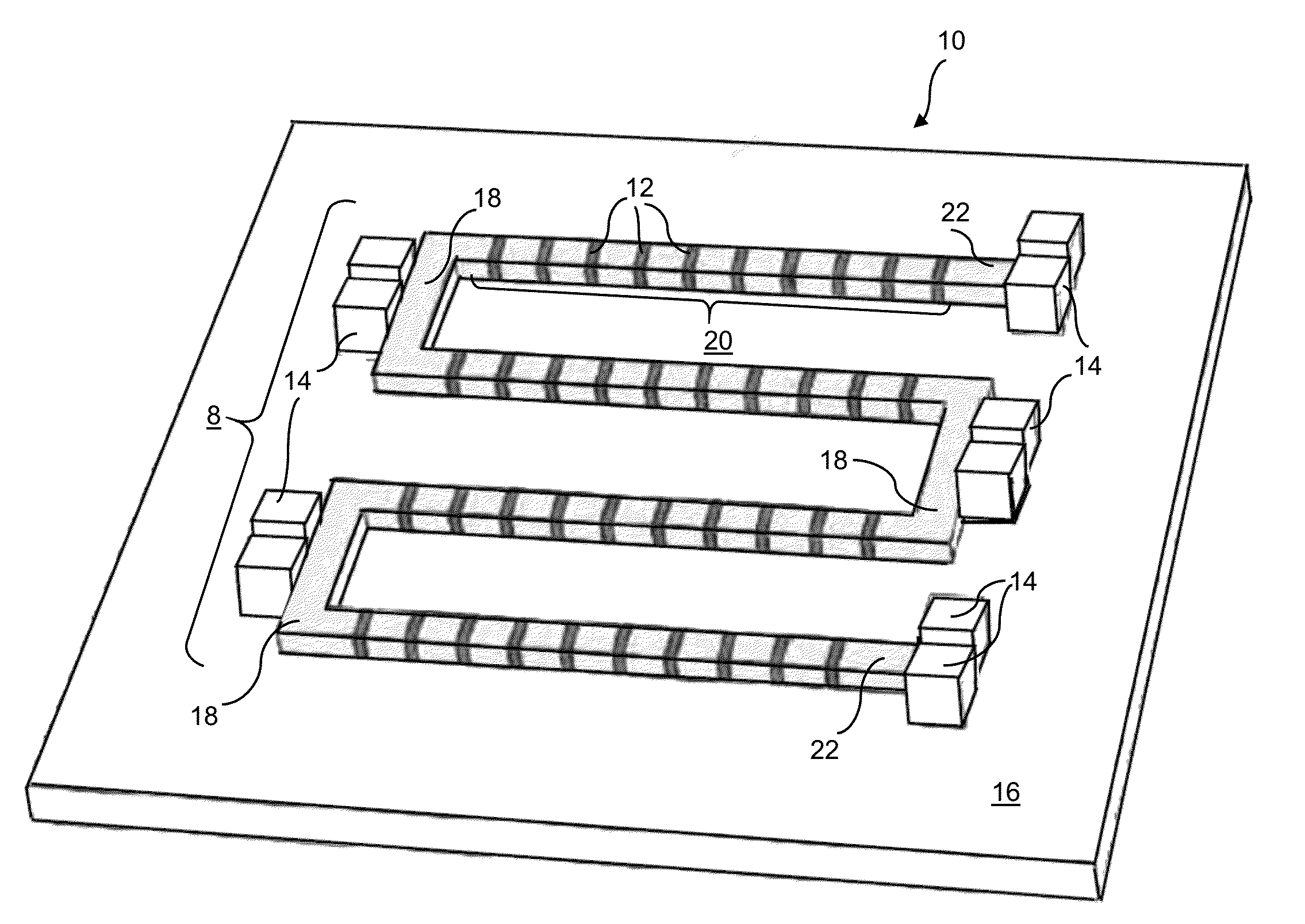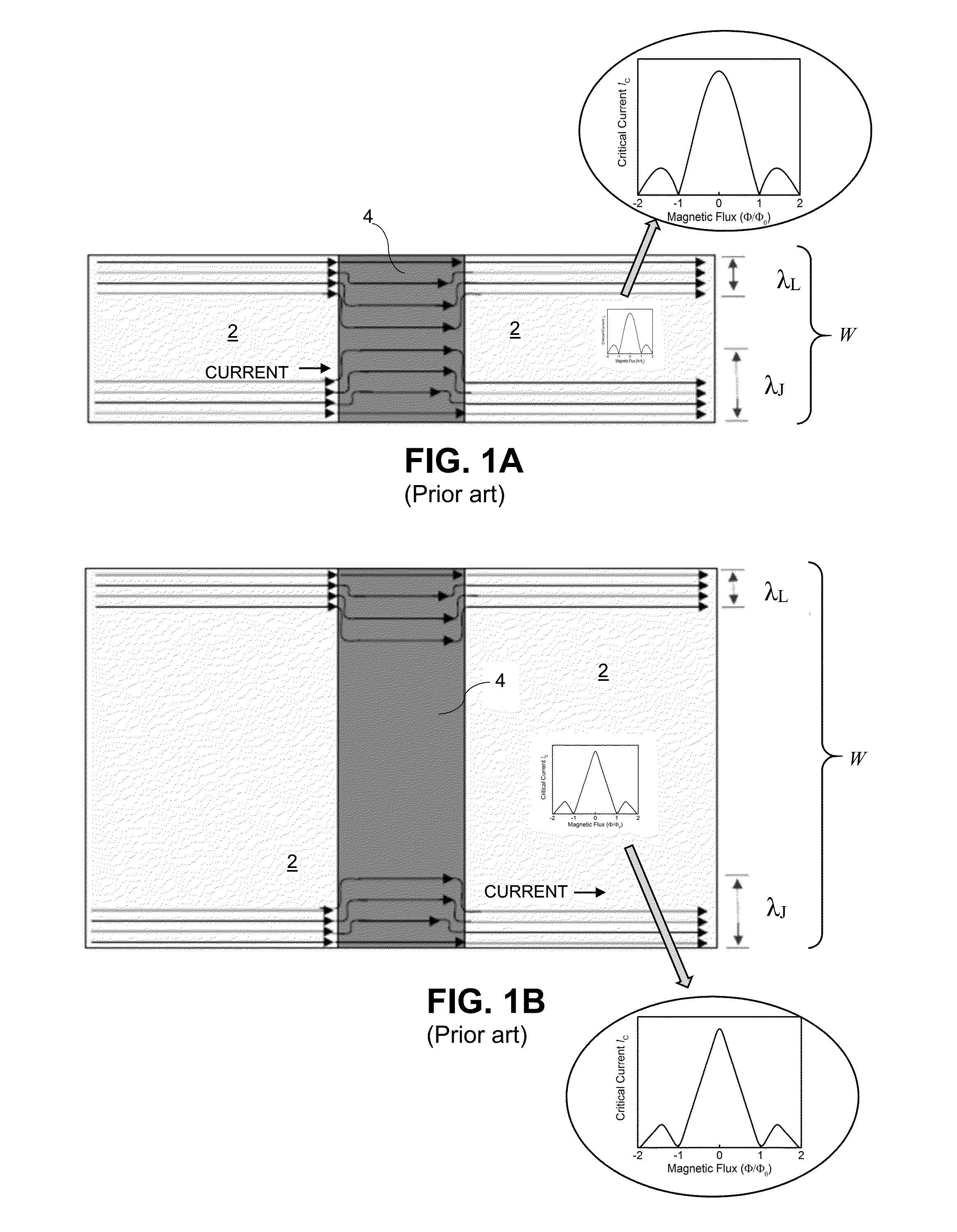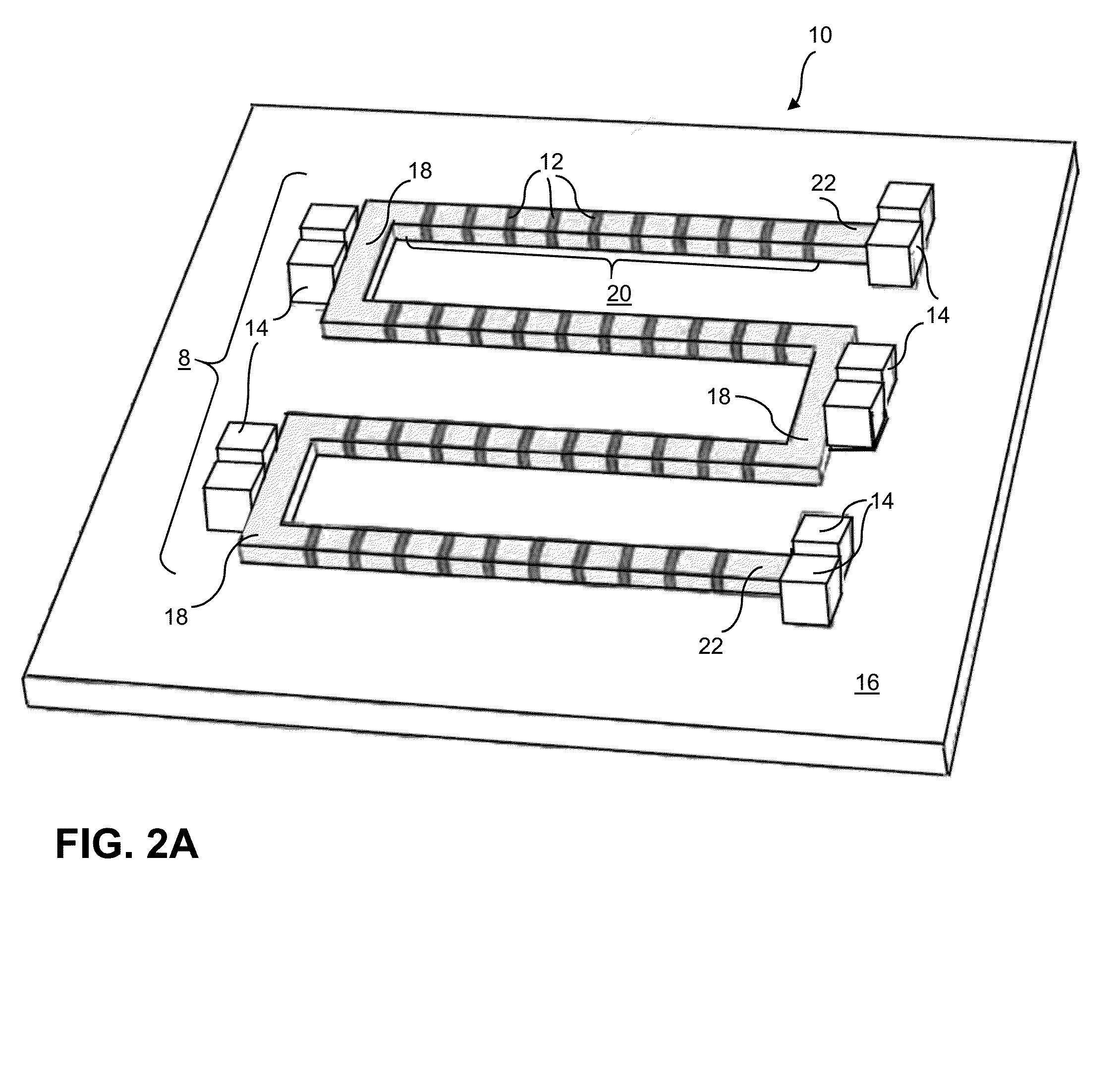Magnetic flux-to-voltage transducer based on josephson junction arrays
- Summary
- Abstract
- Description
- Claims
- Application Information
AI Technical Summary
Benefits of technology
Problems solved by technology
Method used
Image
Examples
Embodiment Construction
[0036]A Fraunhofer magnetic field sensor (FMFS)-based device is formed from an array of Josephson junctions to produce increased voltage yield, improved sensitivity, and signal-to-noise ratio well beyond that obtainable from SQUID devices. The inventive devices are capable of operation above the boiling point of liquid nitrogen, can be very densely spaced ˜500 nm, easily manufactured, are uniform to better than 10% variation with excellent temporal stability. Utilization of wide junctions greatly simplifies photolithography while increasing sensitivity and linearity. The voltage obtainable by large linear arrays according to the FMFS junction technology is unsurpassed due to the large number of junctions possible.
[0037]FIG. 2A diagrammatically illustrates an example of a FMFS-based device 10 fabricated on 1 cm×1 cm substrate 16 consisting of a series array 8 of Josephson junctions 12 arranged in a meander geometry. Each of the junctions 12 is a long Josephson junction, i.e., one in ...
PUM
 Login to View More
Login to View More Abstract
Description
Claims
Application Information
 Login to View More
Login to View More - R&D
- Intellectual Property
- Life Sciences
- Materials
- Tech Scout
- Unparalleled Data Quality
- Higher Quality Content
- 60% Fewer Hallucinations
Browse by: Latest US Patents, China's latest patents, Technical Efficacy Thesaurus, Application Domain, Technology Topic, Popular Technical Reports.
© 2025 PatSnap. All rights reserved.Legal|Privacy policy|Modern Slavery Act Transparency Statement|Sitemap|About US| Contact US: help@patsnap.com



